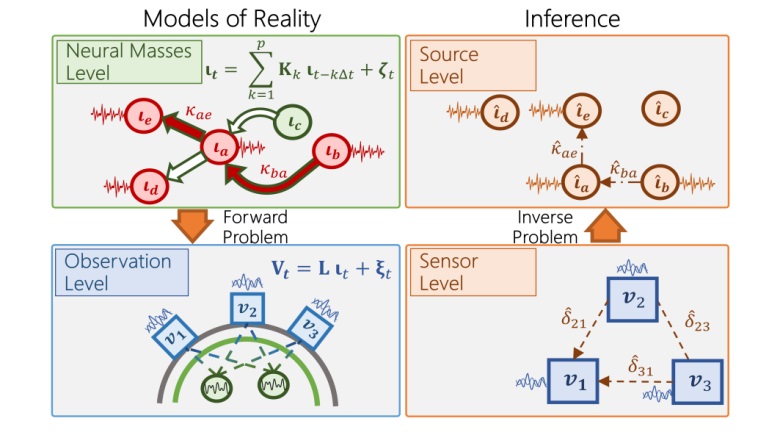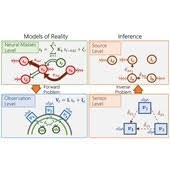
Brain function and dysfunction are encoded in networks within the brain that are distributed over 3-dimensional space and evolves in time. It is of great importance to image brain activation and functional connectivity which are the building blocks of neural information processing. Such knowledge plays an important role for neuroscience research and clinical applications of managing various brain diseases. It is important to map the spatially distributed and temporally dynamic neural activity with high resolution in space and time domains. Noninvasive high-resolution imaging of spatio-temporal patterns of neural activation and connectivity would greatly improve our understanding of the mechanisms of perception, attention, learning, etc., and for managing neurological mental diseases such as epilepsy, stroke, neurodegeneration, depression, etc.
Intracranial EEG (iEEG), EEG/MEG, and the source signals reconstructed by EEG/MEG source imaging techniques have been proven efficient for measuring brain functional connectivity between various regions. Functional connectivity measures, such as coherence or causal directions, have been used to study brain networks associated with cognitive functions, spontaneous activities and neurological disorders. The goal of electrophysiological connectivity analysis is to infer neural connectivity: the causal influence that neural masses exert upon each other.
In this tutorial paper, we describe the theoretical basis, computational algorithms, and applications of dynamic functional brain connectivity analysis from electromagnetic measurements, including EEG, MEG, ECoG and SEEG. The merits, limitations, and needs for future development are also discussed.

